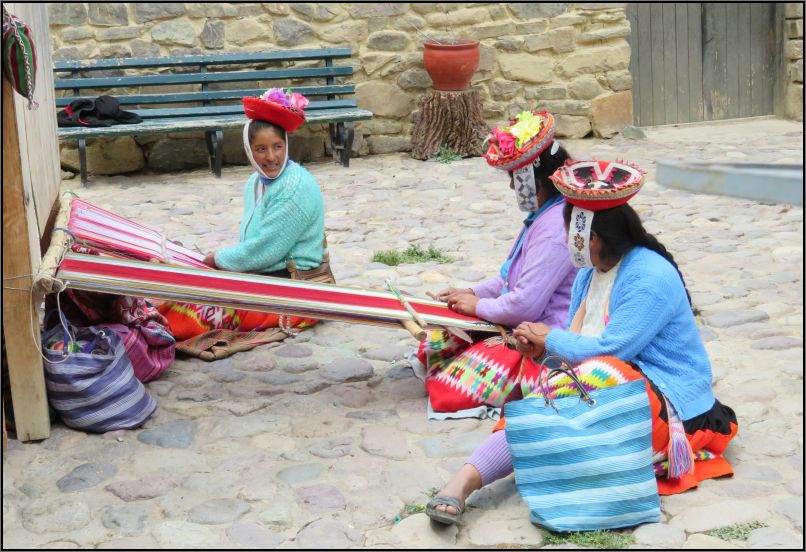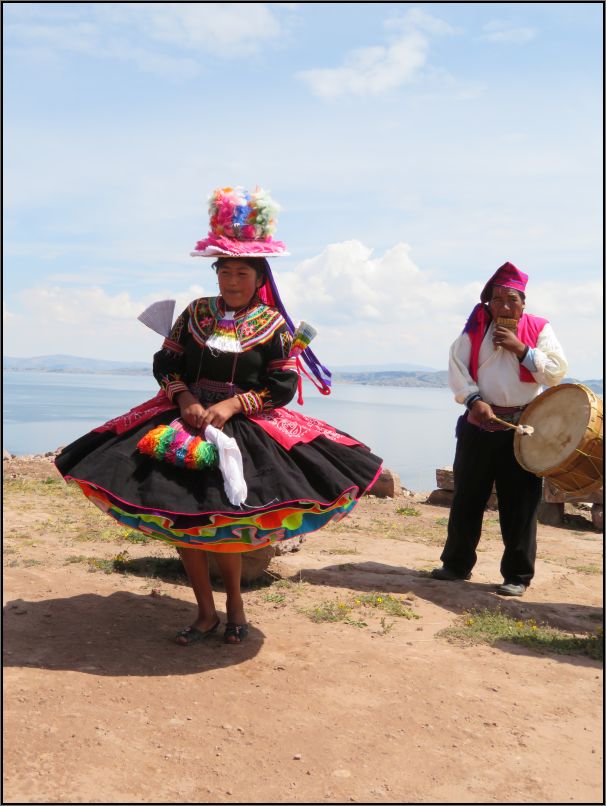“There are only two ways to live your life. One is as though nothing is a miracle. The other is as though everything is a miracle.” – Albert Einstein
What are you interested in, when you visit new places? Is it the food, the landscape, or the climate that motivates you to chose a certain destination? Cities, or remote areas? Museums, or parks? Mountains, or oceans? People, or places?
Peru has everything a tourist or a photographer is wishing for. I saw and photographed many locals in all areas we visited during our trip to Peru, in 2019. Not necessarily the people (as I didn’t want to intrude into their personal life), but especially their traditional costumes, which are truly eye-catching, with their unique motifs and vivid colours.
More places we visited, more women I’ve noticed, with an obvious reason that most of the people we’ve seen in the markets, or the streets were females. No wonder, their husbands were the drivers, and always on the road between the touristic places, working the fields, or far away, working in the big cities, as one of our guides tried to explain the simple life from rural areas.
I’m not sure if the women from Peruvian highlands see their day to day lives as a miracle, but from a tourist point of view this is totally different. The sporadic vegetation, the remoteness of the villages, and of the cultivated lands might look scary for people coming from a different civilization. The bone-dry lands look sad sometimes, same as some of the unflinching faces of the locals.
But the life goes on, good or bad, or just the same as it went by for hundreds of years.
If you walk long enough, you see people carrying stuff in big pieces of cloth on their backs. But also, mothers carrying their babies in the same way, using traditional Andean mantas. The role of a mother is not an easy one, especially in Peru. After Peruvian independence in 1821, the Peruvians still had a long way to go, as many conflicts of interests, instability, insecurity went through the country.
After about 100 years of struggle, back in 1955, Peru managed to enact a law to recognize the women’s right to vote. Peruvian women celebrate September 7 as the Day of Women’s Civil Rights. The law made women eligible to vote for the first time the following year, in 1956, in which eight congresswomen and one female senator were elected to the Congress of the Republic.
But in the Highlands, the time has a different meaning. There are sad faces, but also happy faces, most of the time when the kids are around. What more could a mother ask for, when she has her happy kids around?

But working mothers look differently. Most of them seem to be worried, concerned, as they are by themselves trying to earn a living, while taking care of the children.
Carrying them has become a tradition, as you can see from the way the toys are crafted.
Traveling around, we had the opportunity to see various traditional garments. In all market places you could hear them shouting all the time: Chompas y chullos. I loved the way they were saying it, and I shortly learned what that means, they are the traditional Andean sweaters and hats, made with Alpaca wool. But while the men and the children wear these chullos, the women wear other type of hats. We were amazed at so many styles, so many colours, in all regions we travelled across the Peruvian Highlands, that we lost count. We later found out from one of our guides that traditionally, their hats resemble the form of the nearby mountain. We haven’t seen all the mountains yet; still, so much to discover!
~ Visited in April 2019
If you enjoyed the traditional costumes from this post, you might also like:




















Your post is so inspiring ! Thank you !
LikeLiked by 1 person
Thank you Diana for your kind note🙂
xx
LikeLike
Wow! This brings memories of our time there.It was one of the best sites we have seen.
LikeLiked by 1 person
Glad I was able to bring you back fond memories from Peru🙂 Have a lovely day, xx
LikeLike
The clothing and the hats are colorful, to say the least, Christie. It seems to me their traditional dress shows a lot of pride in what they wear. Thanks. –Curt
LikeLiked by 1 person
Definitely they have something in their posture, showing us the strength and the resilience of their character, beside the pride of wearing their traditional cloths. Thank you for reading Curt!
Christie
LikeLiked by 1 person
Some phenomenal captures Christie. Such colourful costumes and great character in the faces. Thanks for sharing. Allan
LikeLiked by 1 person
I was impressed that all those vivid colours are still dyed naturally, using plants, and herbs. Thank you for your kind note Allan.
Christie
LikeLiked by 1 person
II was pleased to find the traditional Peruvian clothes, still widely worn in the countryside and less in the cities. Especially in the Colca valley where Collaguas and Cabanas are distinguished by the shape of their hats.
LikeLiked by 1 person
Indeed, the countryside is known to better preserve the traditions, and I think this applies to most of the countries. Although certain points were obviously more touristic than others, I did enjoy our tour very much🙂 Thank you for reading
LikeLiked by 1 person
I visited Peru in 2018 and I got to see a glimpse of the traditional life through wool dyeing and the textiles made. It’s such a distinctive culture unlike anything else I’d experienced so far, and Peru is definitely a worthwhile place to check out at least once in one’s lifetime! Thanks for sharing your adventure!
LikeLiked by 1 person
Thank you for your kind note Rebecca! Peru is such a large country, with so many opportunities, that anyone can always find something to do. We truly enjoyed our visit there, and if I would have a chance, I wouldn’t mind to go back one day🙂
xx
LikeLiked by 1 person
incredible portraits cristina, just amazing work. i often wondered how people can live in such barren places. it defies understanding i think. but they do!
LikeLiked by 1 person
People are much more resilient than one would imagine, and some of them really have no other choice. Thank you for your kind note Andy!
LikeLike
Definitely an amazing blog 🙂
LikeLike
Thank you for stopping by🙂
LikeLike
You have captured some great faces here 😊
LikeLiked by 1 person
Thank you!!!
LikeLiked by 1 person
A very interesting post. Those hats are amazing. I love all those colours. You would think though with all the hard work they do they would find something more comfortable to wear!
LikeLiked by 1 person
Thank you for your kind note! I think they wore the same outfit for so long, they might consider it comfortable😊
Have a lovely day! xx
LikeLike
Wow! What a fantastic post! Thanks so much, Christie, for this engaging photo series and dialogue on Peru and Peruvian women and their world and traditions. I spent many weeks exploring Peru, usually in the wilderness, and I loved seeing the people and their ways. Your photos captured many of the scenes I saw in Cuzco and smaller towns, and you did an excellent job of highlighting the beauty of these people and their culture.
LikeLiked by 1 person
Thank you Jet for your kind words, glad to bring you back lovely memories from Peru.
I also like to observe the people and their life in places we visit, there is always something new to discover, something new to learn.
Take care, Christie
LikeLiked by 1 person
Such a beautiful post. So many expressions captured in one post. Thanks for sharing 🙂
LikeLiked by 1 person
thank you so much for your nice words🙂
LikeLike